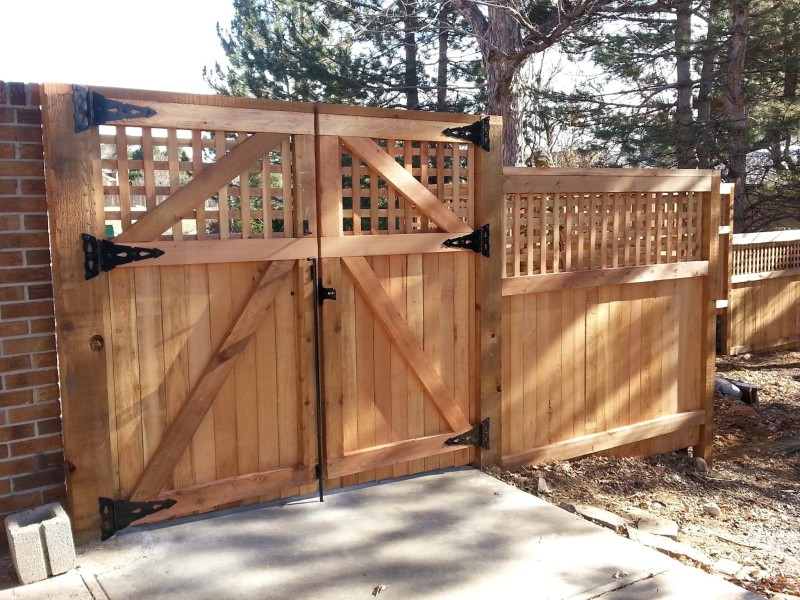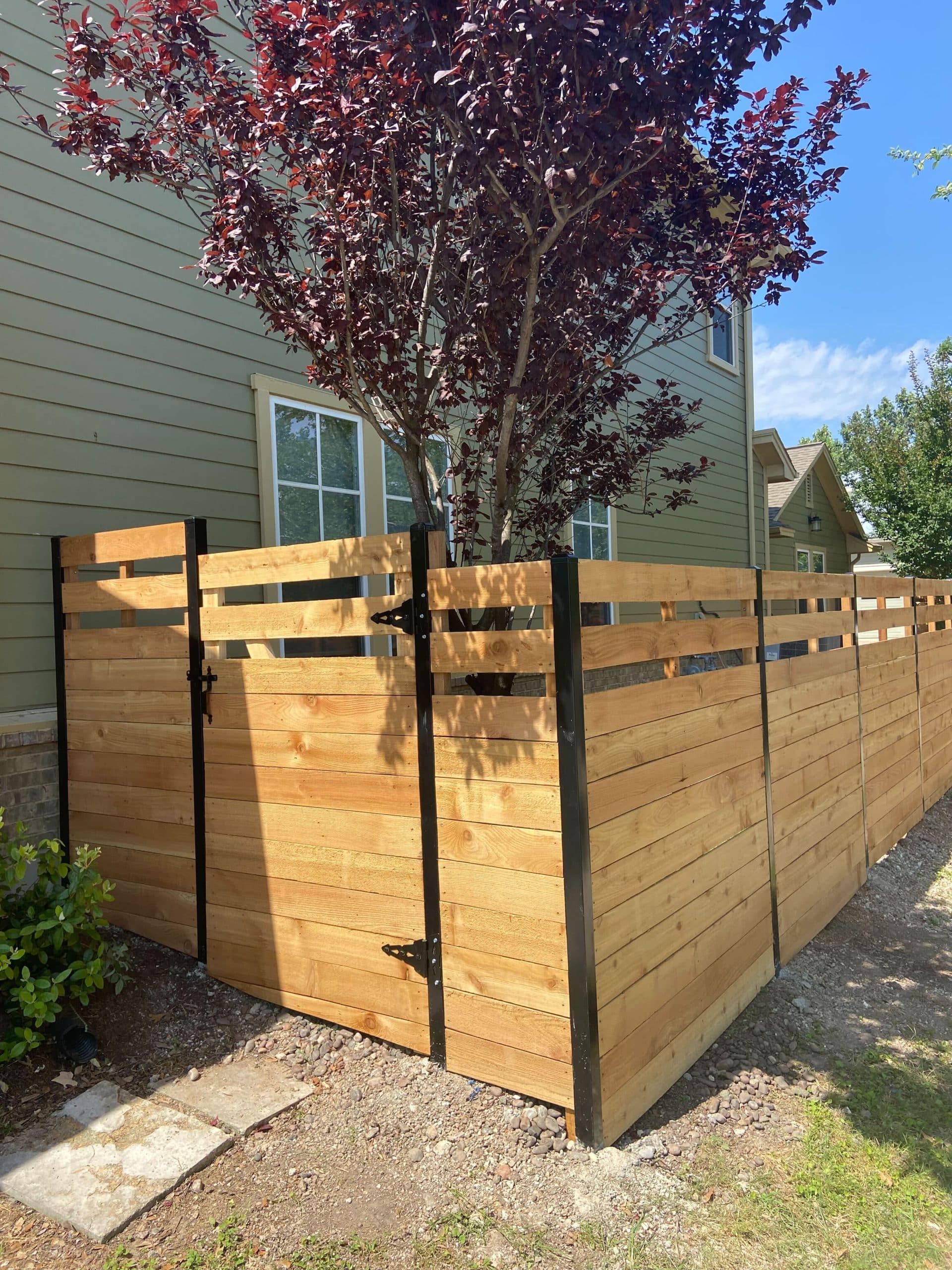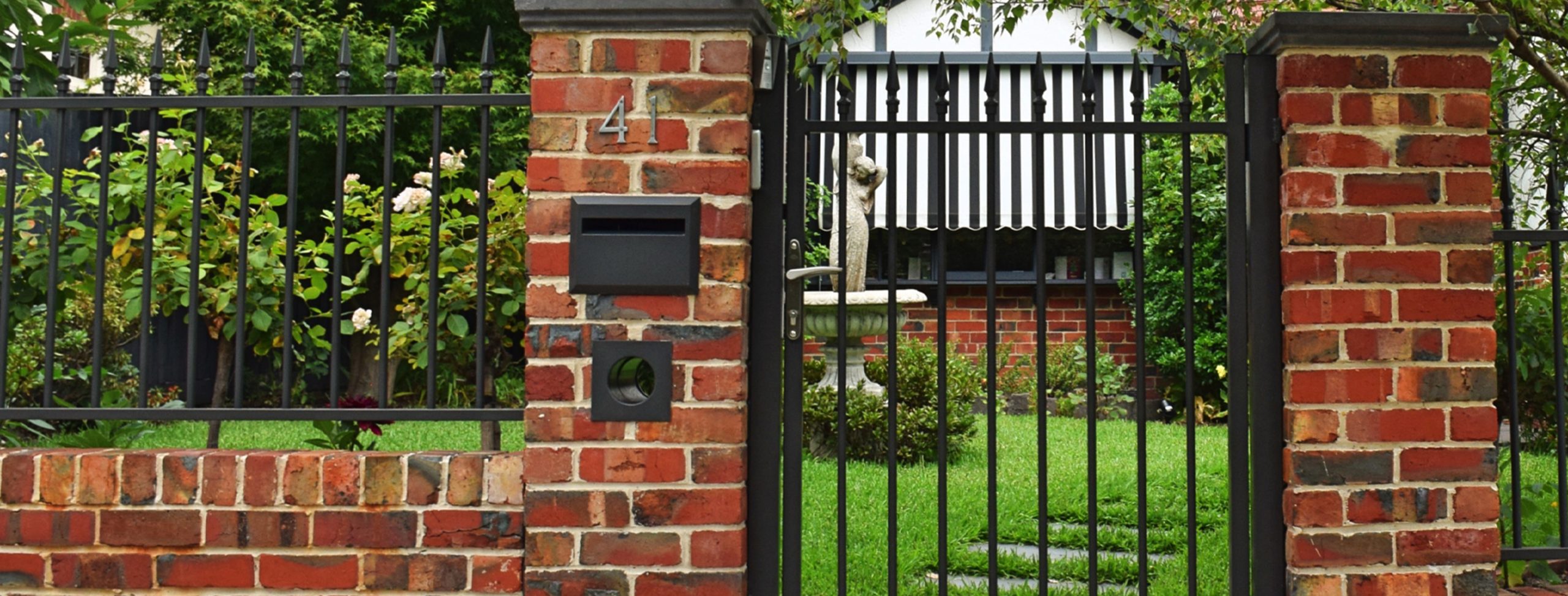All Categories
Featured
When choosing a fence for your residential property, it's vital to consider variables like price, resilience, maintenance, and aesthetic appeal. Three of the most preferred materials for residential and commercial fencings are light weight aluminum, vinyl, and wood.
Wood Fence. Pros:
![]()
All-natural Aesthetic: Timber fencings are known for their traditional, natural appearance. They can quickly mix into most landscapes and boost the beauty of your home or organization. Whether you're aiming for a rustic look or a more polished finish, timber can be tailored with paint, tarnish, or sealant. Modification: Wood is among the most flexible products, enabling a wide range of styles, such as picket fencings, privacy fences, and ranch-style rooms. It's simple to readjust the style to fit the certain requirements of your building. Budget friendly: Normally, timber fences come at a reduced preliminary expense contrasted to vinyl or aluminum, making them a cost-effective alternative for those on a budget. Cons:
Maintenance Needs: Wood fencings need normal upkeep to preserve their appeal and performance. This consists of discoloration or painting to secure against rot, termites, and weather damages. Without appropriate treatment, wood can break down over time. Shorter Life-span: Contrasted to plastic or aluminum, timber fencings have a tendency to have a much shorter life expectancy, especially in locations with extreme weather condition. Severe conditions, such as hefty rainfall, humidity, or snow, can create timber to degrade quicker. Prone to Damage: Wood fencings are vulnerable to damage from pests, including termites, as well as all-natural wear from weather. They might likewise warp or fracture otherwise appropriately preserved. Vinyl Fencing. Pros:
Reduced Maintenance: Among the primary benefits of vinyl fences is that they need marginal maintenance. Unlike timber, plastic does not need to be painted, sealed, or stained. It's immune to fading, discoloration, and splitting, which saves time and cash on upkeep. Longevity: Vinyl is known for its capability to stand up to severe weather without wearing away. It's unsusceptible pests like termites, and its resistance to dampness and UV rays guarantees it stays looking excellent for several years. Resilient: A vinyl fence can last approximately three decades or more, making it a terrific long-term investment. Many manufacturers supply warranties, better improving its value. Range of Styles: Plastic fences are offered in various colors and designs, including those that mimic timber. You can select from privacy, picket, or decorative styles, giving flexibility to match your home or business. Disadvantages:
![]()
Greater Upfront Price: Vinyl fencings tend to have a greater first expense than timber. While the lasting cost savings on maintenance are substantial, the ahead of time financial investment may be a deterrent for some homeowners. Minimal Modification: Plastic fencings can be found in typical designs, and while designs and shades are different, you might not have as much adaptability for personalization compared to wood. Fracturing in Cold Climates: While plastic is sturdy, in extremely chilly environments, it can become fragile and split upon effect, which can be troublesome in locations with severe winter seasons. Aluminum Fencing. Pros:
Reduced Maintenance: Aluminum fences are understood for their low-maintenance demands. Unlike timber, aluminum doesn't rust or corrode, and it does not require to be repainted or sealed. This makes it a fantastic selection for those that desire a convenient choice. Sturdiness and Stamina: Light weight aluminum is a robust product that stands well to harsh weather. It's an excellent selection for seaside areas where deep sea deterioration is an issue, as it's immune to corrosion. Aesthetic Charm: Light weight aluminum fencings supply a clean, elegant appearance, typically used for ornamental purposes. They're available in different styles, including ornamental styles, and can include a premium feeling to your property. Safety: Aluminum fencings are long lasting and offer great safety, especially when installed with gateways or locks. Their sturdy building and construction provides a trusted obstacle against unwanted access. Cons:
![]()
Greater Initial Expense: Aluminum fencings tend to be much more pricey than timber, especially if you opt for attractive styles. The ahead of time cost might be prohibitive for some. Much Less Personal privacy: Aluminum fencings normally have broader voids between the slats, which means they supply much less privacy than timber or plastic fencings. Light weight aluminum might not be the finest choice if seclusion is a priority. Denting Concerns: While light weight aluminum is rust-resistant, it is susceptible to bending or denting if struck with force. An automobile accident or heavy influence can trigger long lasting damage to the fencing. Which Fencing Product is Right for You? Selecting the best fencing depends on several variables, including your budget, design preferences, maintenance capability, and the atmosphere in which you live. If you want an all-natural look and are prepared for regular maintenance, timber could be the right alternative. If low-maintenance and long life are your concerns, plastic is an excellent choice. For those that choose a smooth, modern-day look with marginal care, light weight aluminum supplies a durable, safe option.
Eventually, each fence material has its disadvantages and pros, so it's crucial to review what matters most for your particular needs. Consider the environment, the level of personal privacy you require, and just how much maintenance you're prepared to commit to, and you'll find the ideal fencing for your building.
Wood Fence. Pros:

All-natural Aesthetic: Timber fencings are known for their traditional, natural appearance. They can quickly mix into most landscapes and boost the beauty of your home or organization. Whether you're aiming for a rustic look or a more polished finish, timber can be tailored with paint, tarnish, or sealant. Modification: Wood is among the most flexible products, enabling a wide range of styles, such as picket fencings, privacy fences, and ranch-style rooms. It's simple to readjust the style to fit the certain requirements of your building. Budget friendly: Normally, timber fences come at a reduced preliminary expense contrasted to vinyl or aluminum, making them a cost-effective alternative for those on a budget. Cons:
Maintenance Needs: Wood fencings need normal upkeep to preserve their appeal and performance. This consists of discoloration or painting to secure against rot, termites, and weather damages. Without appropriate treatment, wood can break down over time. Shorter Life-span: Contrasted to plastic or aluminum, timber fencings have a tendency to have a much shorter life expectancy, especially in locations with extreme weather condition. Severe conditions, such as hefty rainfall, humidity, or snow, can create timber to degrade quicker. Prone to Damage: Wood fencings are vulnerable to damage from pests, including termites, as well as all-natural wear from weather. They might likewise warp or fracture otherwise appropriately preserved. Vinyl Fencing. Pros:
Reduced Maintenance: Among the primary benefits of vinyl fences is that they need marginal maintenance. Unlike timber, plastic does not need to be painted, sealed, or stained. It's immune to fading, discoloration, and splitting, which saves time and cash on upkeep. Longevity: Vinyl is known for its capability to stand up to severe weather without wearing away. It's unsusceptible pests like termites, and its resistance to dampness and UV rays guarantees it stays looking excellent for several years. Resilient: A vinyl fence can last approximately three decades or more, making it a terrific long-term investment. Many manufacturers supply warranties, better improving its value. Range of Styles: Plastic fences are offered in various colors and designs, including those that mimic timber. You can select from privacy, picket, or decorative styles, giving flexibility to match your home or business. Disadvantages:

Greater Upfront Price: Vinyl fencings tend to have a greater first expense than timber. While the lasting cost savings on maintenance are substantial, the ahead of time financial investment may be a deterrent for some homeowners. Minimal Modification: Plastic fencings can be found in typical designs, and while designs and shades are different, you might not have as much adaptability for personalization compared to wood. Fracturing in Cold Climates: While plastic is sturdy, in extremely chilly environments, it can become fragile and split upon effect, which can be troublesome in locations with severe winter seasons. Aluminum Fencing. Pros:
Reduced Maintenance: Aluminum fences are understood for their low-maintenance demands. Unlike timber, aluminum doesn't rust or corrode, and it does not require to be repainted or sealed. This makes it a fantastic selection for those that desire a convenient choice. Sturdiness and Stamina: Light weight aluminum is a robust product that stands well to harsh weather. It's an excellent selection for seaside areas where deep sea deterioration is an issue, as it's immune to corrosion. Aesthetic Charm: Light weight aluminum fencings supply a clean, elegant appearance, typically used for ornamental purposes. They're available in different styles, including ornamental styles, and can include a premium feeling to your property. Safety: Aluminum fencings are long lasting and offer great safety, especially when installed with gateways or locks. Their sturdy building and construction provides a trusted obstacle against unwanted access. Cons:

Greater Initial Expense: Aluminum fencings tend to be much more pricey than timber, especially if you opt for attractive styles. The ahead of time cost might be prohibitive for some. Much Less Personal privacy: Aluminum fencings normally have broader voids between the slats, which means they supply much less privacy than timber or plastic fencings. Light weight aluminum might not be the finest choice if seclusion is a priority. Denting Concerns: While light weight aluminum is rust-resistant, it is susceptible to bending or denting if struck with force. An automobile accident or heavy influence can trigger long lasting damage to the fencing. Which Fencing Product is Right for You? Selecting the best fencing depends on several variables, including your budget, design preferences, maintenance capability, and the atmosphere in which you live. If you want an all-natural look and are prepared for regular maintenance, timber could be the right alternative. If low-maintenance and long life are your concerns, plastic is an excellent choice. For those that choose a smooth, modern-day look with marginal care, light weight aluminum supplies a durable, safe option.
Eventually, each fence material has its disadvantages and pros, so it's crucial to review what matters most for your particular needs. Consider the environment, the level of personal privacy you require, and just how much maintenance you're prepared to commit to, and you'll find the ideal fencing for your building.
Latest Posts
Find Top Car Repair Care offered by Montclare Auto Repair – Drive with Confidence
Published May 24, 25
1 min read
Uncover Montclare Auto Repair’s Premier Auto Repairs and Why Drivers Trust Them
Published May 21, 25
1 min read
Discover the Greatest Auto Repair Deals in Montclare, Chicago
Published May 20, 25
1 min read
More
Latest Posts
Find Top Car Repair Care offered by Montclare Auto Repair – Drive with Confidence
Published May 24, 25
1 min read
Uncover Montclare Auto Repair’s Premier Auto Repairs and Why Drivers Trust Them
Published May 21, 25
1 min read
Discover the Greatest Auto Repair Deals in Montclare, Chicago
Published May 20, 25
1 min read